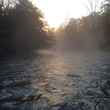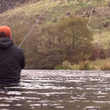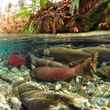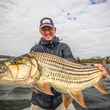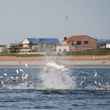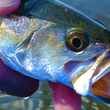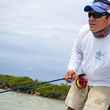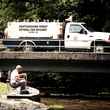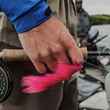Being successful swinging flies for winter steelhead is all about adapting to changing conditions and paying attention to details. Over the next few months our steelhead rivers will get pummeled with fierce storms and high water events. Other times we may see extremely cold, low water conditions.
Whether you swing for chrome on the West Coast or in the Great Lakes, it’s a rare day to have an “optimal” situation during the winter. As the conditions change you need to adjust your tackle, the water you choose to fish and the way you swing your fly. Here are seven tips that might help you find chrome this winter.
Look for the “couch” water
Regardless of the time of year, water temperature should be the biggest factor in where you decide to focus your efforts. Steelhead are a lot like us, if it’s cold and nasty outside they conserve energy and hang out on the couch. Couch water is the slow, soft water usually located in the guts and tail-outs of pools. In the cold months of winter, don't waste precious fishing time focusing on fast riffles. The fish rarely live there when the water temps plummet. That said, don’t miss the transition zone at the heads of pools. Look for the place where the water slows down just below a riffle as these are often key winter holding locations (credit to Great Lakes guide Jeff Liskay for this awesome term).



